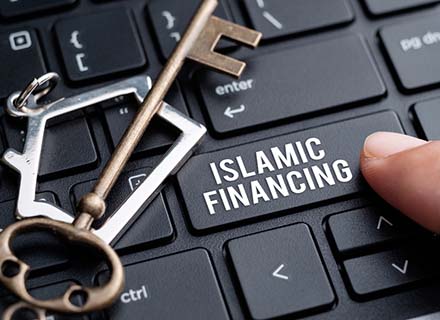Despite being young in the global financial landscape, Islamic finance has already established its firm grip over the markets in more than 80 countries, and according to the Islamic Financial Services Board’s (IFSB’s) “The Islamic Financial Services Industry (IFSI) Stability Report 2023”, the industry was worth an estimated USD 3.25 trillion in 2022, after recording a 6.2% growth rate that year. By 2025, the value is projected to reach USD 4.94 trillion.
Talking about Islamic finance’s growth story, Narendra Mistry, Chief Product Officer (CPO), Universal Banking, Finastra identified three main ways in which the industry could continue its journey towards greener pastures.
While one of them is gaining market share in existing markets, the other two were further expansion in other Islamic markets and making good use of “the esteemed reputation and ethical principles that underpin Islamic banking” respectively. The last option could be used to support growth in markets that are not traditionally associated with Islamic finance.
“Technology is a crucial prerequisite in achieving this growth, and only the right technology combined with a deep understanding of Islamic finance can enable agility and lead to steady growth, equipping Islamic financial institutions (IFIs) to offer market-leading products and seamless customer experiences while leveraging the enhanced distribution capabilities of truly digital banking,” Mistry stated further, while writing for the International Banker.
Differentiating Islamic And Conventional Banking
Islamic finance underpins banking services that follow Sharia principles. The financing process here gets addressed in a fundamentally different way than in conventional banking.
“Interest is strictly forbidden, including for loans and customer deposits. Instead, IFIs use equity participation—the IFI shares the profits and losses associated with the account. They also invest in ethical trading activities and are required to ensure that profit payouts are conducted in line with Sharia principles,” Mistry remarked.
Islamic finance aligns with specific customer values like the belief that money does not inherently have value but is a means to exchange products and services. This value has a strong prevalence in the MENA region, along with some other pockets of the world.
Islamic finance also corresponds with the other rising global banking demands like ethical, sustainable and responsible practices.
Islamic banking operating model also comes with an additional layer of complexity, as the procedures and controls involved here are rigorously focused on upholding Sharia compliance, apart from ensuring that the right financing products get placed before the customers.
Challenge Of Running Two Core Banking Systems
Banks can run both conventional and Islamic financial models, by deploying two different core banking ecosystems. However, one challenge in implementing this solution is the massive rise in IT costs.
“Using two core banking systems also means that compliance measures with national and international regulations must be implemented twice. This is an ongoing exercise as rules and regulations continually evolve and new products are introduced. Managing credit risks promptly is another challenge, as having to view and extract data from two different systems is more time-consuming and resource-intensive,” Mistry stated further.
“With a few exceptions, technology vendors have poorly served IFIs, offering mostly slightly modified versions of conventional banking or Islamic banking systems built on outdated technologies that can’t keep up with the unique needs of IFIs,” he commented, while noting down the challenges faced by the Islamic financial institutions on the technology front.
As per a survey by the International Banker, 74% of the Islamic banks have expressed concerns about the limitations imposed by legacy infrastructures and outdated technologies, which further make it difficult for these financial institutions to adapt to evolving market dynamics and stay competitive.
The above challenges also prevent the banks from using the data effectively, apart from increasing their cybersecurity risk. A 2021 CIBAFI (General Council for Islamic Banks and Financial Institutions) study highlighted Islamic banks citing technology and cybersecurity as their most prominent operational risks.
Finding The Solution
While choosing a digital architecture that will support both the conventional and Islamic banking models, a financial venture doesn’t need to implement a wholesale architecture transformation right away. Instead, it can improve its market performance, security and scalability by gradually adopting the best solutions.
“Microservices-based architecture and composable banking support this approach, enabling banks to quickly integrate new functionalities and solutions from third-party fintechs (financial-technology firms) to promote agility and innovation,” Mistry observed.
Islamic financial institutions simply need to adopt a modern, proven and resilient platform that will meet the sector’s requirements, apart from being capable of supporting Islamic banking operations, while facilitating the adoption of innovative technologies to improve customers’ experiences, streamline processes and enable innovation in their products and services.
Finding The Examples
Adopting the Cloud will help Islamic banks to become more agile, collaborative and customer-focused, apart from scaling their operations, reducing costs, adapting to regulatory changes and improving data management and security.
“By tapping into the growing ecosystem-driven nature of financial services, banks can also implement innovative applications that deliver additional value while reaching prospective customers through new routes to market (RTMs),” Mistry commented further.
Open banking, artificial intelligence (AI) and machine learning (ML) are also becoming more prevalent. While open banking enables the secure and free movement of customer data through APIs (application programming interfaces), with customers’ permission, it makes financial services more personalised and accessible. AI and ML can facilitate quick analysis of data to identify customers’ financial preferences and market trends. According to a Boston Consulting Group (BCG) study, 79% of Saudi customers were found to be sharing their data to improve banking services.


